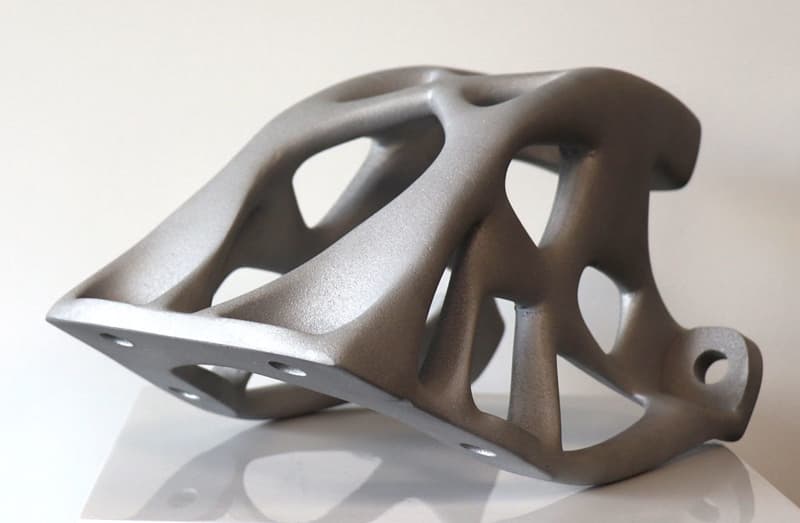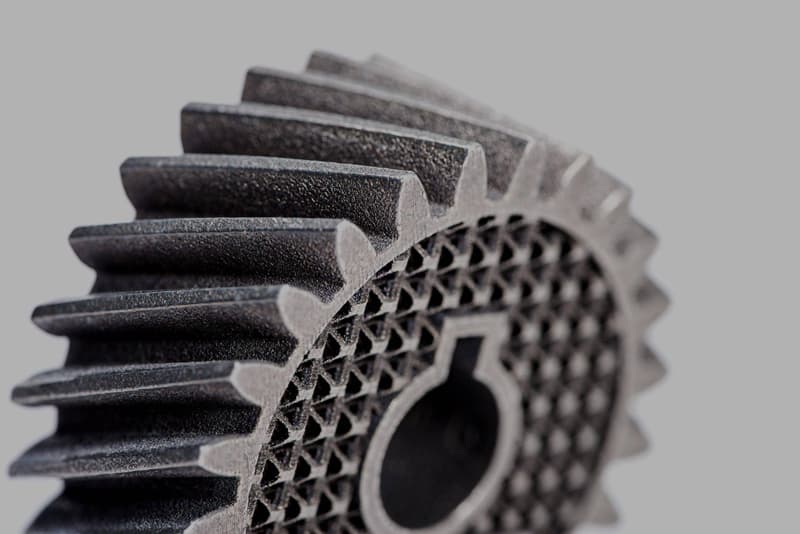
Selective Laser Melting (SLM) and Direct Metal Laser Sintering (DMLS) are two main processes used to manufacture industrial metal parts, which are a subset of additive manufacturing. To manufacture complex objects using additive manufacturing, metal powders are carefully deposited layer by layer.
SLM excels at generating high-density components with outstanding mechanical strength because it uses fully melted metal particles to make solid pieces. This method produces pieces that are extremely strong and durable. DMLS, on the other hand, works by fusing metal particles together rather than entirely melting them, allowing for a wider range of materials and shorter manufacturing cycles.
Understanding these technologies aids in determining the best one for your unique application. SLM is appropriate for high-performance parts with advanced material qualities, whereas DMLS is best suited for applications that require a diversity of materials and faster turnaround times.
Overview of metal 3d printing technology
Metal 3D printing uses digital designs to build parts layer by layer from metal powders. In this process, a laser or electron beam melts the powder to form solid objects. Powder bed fusion is a key method in metal 3D printing. It involves spreading a layer of metal powder and using a heat source to fuse the particles together. This process repeats layer by layer until the part is complete. Essentially, powder bed fusion is the technique that makes metal 3D printing possible, allowing for precise, complex metal parts to be created from powdered materials. Metal 3D printing has two basic technologies: SLM and DMLS. Both technologies employ a laser to fuse metal particles into solid things, but in distinct ways.
SLM melts metal particles entirely, resulting in a robust and dense component suitable for high-performance applications. This technology is widely utilized in the aerospace and medical industries, where strength and precision are essential.

DMLS, while comparable, involves the partial melting or sintering of metal powders. This method supports a wider range of materials and is commonly used for prototyping and functional parts in industries such as automotive and industrial machines.

Simple explanation of slm and dmls
Selective Laser Melting (SLM) is a method of metal 3D printing that uses a powerful laser to completely melt metal powder. This method produces items with great density and mechanical strength. SLM is especially good in producing complicated shapes with precision. Stainless steel, titanium, and aluminum are common materials used in SLM processes. It is favored in industries where part integrity is critical, such as aerospace and medical implants.
In contrast, Direct Metal Laser Sintering (DMLS) includes the partial melting or sintering of metal particles. The laser heats the metal powder just enough to combine the particles but not enough to melt them entirely. This technology accepts a broader range of materials and is frequently used to create functioning prototypes and production parts. DMLS is well-suited for industries that require a balance between material versatility and build speed, like automotive and industrial sectors. Both SLM and DMLS are integral to the field of metal additive manufacturing, each offering distinct advantages depending on the application.
Key differences: slm vs dmls
Process and Technology Differences SLM and DMLS take fundamentally different approaches to metal powder fusion. SLM employs a laser to completely melt metal powder, producing a totally dense component. This method provides excellent mechanical strength and longevity, making it perfect for high-stress applications. In contrast, DMLS uses partial melting or sintering. The laser warms the powder just enough to fuse the particles together without exceeding the melting point. This approach is useful for materials that are difficult to fully melt and allows for a wider choice of alloys.
Material Compatibility
SLM is commonly employed with metals with high melting points, such as titanium and stainless steel. These materials provide exceptional performance in demanding situations but can be difficult to produce. However, DMLS supports a broader range of metals and alloys, including those with lower melting points. DMLS's versatility makes it an excellent alternative for applications that require material flexibility.
Mechanical Properties and Performance
The mechanical qualities of SLM-produced products are often superior because the powder is fully melted, resulting in higher density and strength. These qualities are crucial for parts that must bear high stresses. DMLS parts may not have the density of SLM parts, but they nonetheless provide acceptable mechanical performance and are often produced faster. Your application's exact mechanical constraints and performance needs will determine whether you choose SLM or DMLS.
comparison of slm and dmls
Both SLM and DMLS have distinct advantages, and the ideal option relies on your project's specific objectives, such as material requirements, performance, and production speed.
Advantages of SLM
SLM provides numerous major advantages. For starters, because the metal powder is completely melted, the pieces are more dense and durable. This makes SLM perfect for applications requiring great performance and reliability, such as aerospace and medical implants. Furthermore, SLM produces a higher surface polish, which is critical for items that require precision and a high-quality look.
Advantages of DMLS
DMLS, on the other hand, has its own set of advantages. The method enhances material adaptability by accommodating a broader range of metal alloys. This versatility can be useful in areas such as automotive and industrial manufacture, where a wide range of materials may be required. Furthermore, DMLS frequently has faster build times than SLM, which can be useful for rapid prototyping and manufacture of functioning parts.
Choosing between slm and dmls
When picking between SLM and DMLS, consider a number of things. Desired material qualities are critical. If you require high-density, high-strength products, SLM may be a superior option due to its ability to totally melt metal particles. DMLS provides versatility and faster build times for applications that require a variety of materials or that prioritize high-speed production.
Another element to consider is the application criteria. SLM is particularly useful in high-performance applications like aerospace and medical implants, where part strength is crucial. DMLS is frequently used for prototypes and parts in where material diversity is critical.
Cost and production time are important factors in the selection. SLM may have greater prices because to its complex process and lengthier production schedules, whereas DMLS can be more cost-effective and faster, particularly for prototyping.
Conclusion
In summary, Selective Laser Melting (SLM) and Direct Metal Laser Sintering (DMLS) provide distinct advantages for metal 3D printing. SLM offers high-density parts with great mechanical strength, making them ideal for demanding applications in aerospace and medicine. DMLS provides increased material variability and quicker manufacturing times, making it perfect for functional prototypes and a wide range of industrial applications. When deciding between these technologies, consider material requirements, application requirements, and cost. Understanding the distinctions between SLM and DMLS will allow you to make the best option for your individual manufacturing requirements. LUSHI 3D printing services has more than 10 years' experience for manufacturing metal 3d printed parts, which enable us to deliver best-in-breed solution for different industrial needs and help our clients achieve the greatest outcomes.
